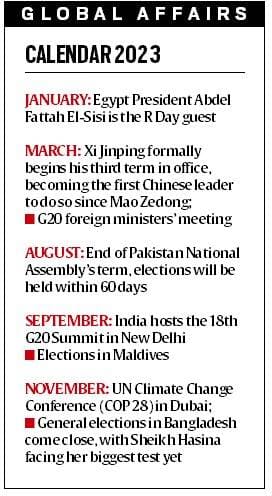Free Courses Sale ends Soon, Get It Now


Free Courses Sale ends Soon, Get It Now



Copyright infringement is not intended
Context: After a tumultuous year in global geopolitics — with the Russia-Ukraine war and China’s belligerence at India’s doorstep — India is entering 2023 with challenges and opportunities staring at it on the diplomatic and military fronts.
Details:

Six hard realities:
Six challenges and opportunities for 2023:
© 2024 iasgyan. All right reserved